Since I was old enough to earn the privilege of having a driver’s license and start paying for my own gas to get me from one place to another, one thing always drummed up curious thought while driving around on my own dime. I would often drive by stations located just across the street from one another and wonder how they could be so far apart in price? I mean, wasn’t fuel from either station going to accomplish the same end result in my car, truck, or lawnmower even? Would the higher priced station supply a product that was going to make my “weed whacker” magically stand up on its own and edge the lawn by itself? I now look at this from a different perspective and see that these stations I have seen, that may differ by $0.10 to $0.15 from one another, may not be the “worst case” scenario when it comes to price difference in the world of fueling!
 In my last blog article, I presented a learning lesson of sorts, publicly displaying my learning curve in the world of CNG. When I first received the new CNG truck, I researched the fueling stations for this new venture hastily, as I was anxious to get the new truck out there and see what I could do with it. Believing some of the hype at first, I thought stations would be in limited supply. What I found out to the contrary is that I live in a “hot bed” of sorts when it comes to alternative fuels, especially in the growing market of compressed natural gas. Since my research was not of the best quality due to the amount of time I had to do it in, I suffered in the beginning, paying prices of over $0.50 more than I am currently paying.
In my last blog article, I presented a learning lesson of sorts, publicly displaying my learning curve in the world of CNG. When I first received the new CNG truck, I researched the fueling stations for this new venture hastily, as I was anxious to get the new truck out there and see what I could do with it. Believing some of the hype at first, I thought stations would be in limited supply. What I found out to the contrary is that I live in a “hot bed” of sorts when it comes to alternative fuels, especially in the growing market of compressed natural gas. Since my research was not of the best quality due to the amount of time I had to do it in, I suffered in the beginning, paying prices of over $0.50 more than I am currently paying.
What I came to find out, as illustrated in this Google Map printout from cngprices.com, the prices can be very sporadic and require a great deal of research and comparison. After all, is fuel from “Station A” going to be any different from the fuel at “Station B”? Nope! They are all required to have a certain minimum methane content and this regulation means you are practically getting the same fuel at both stations, just not for the same price. After using this site to check other cities, I see from the other illustration of the Oklahoma area prices, that this is a great place to be if you own a CNG powered vehicle! I was also curious as to the Wisconsin area, since fellow Team Run Smart Pro Jeff Clark is leased to a carrier there who uses a good amount of CNG trucks. It looks like prices and abundance of CNG are good there as well, with many stations under the $2.00 per gas gallon equivalent (GGE) mark!
My Local CNG Locations and Prices
 |
A Look at Oklahoma Stations and Prices
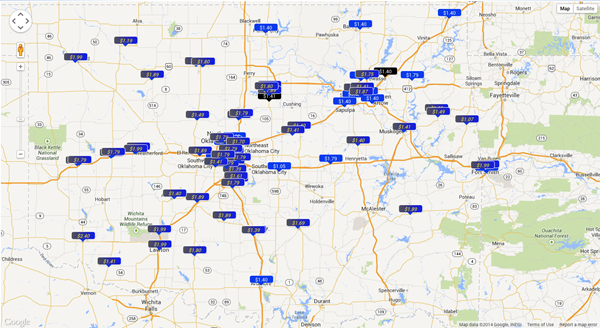 |
Wisconsin Area Locations and Prices
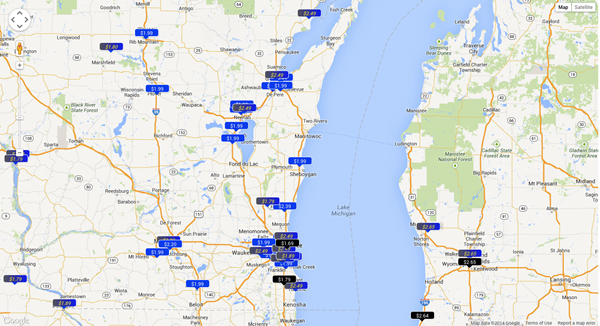 |
I do see the side of the coin from certain Team Run Smart members that have said that fueling stations are sparse in their areas too. I went online today to see what they were talking about and was able to pull up the following maps. They illustrate how certain folks in other areas of the country may only have a couple stations near them, if they have any CNG around at all. The map with the red dot illustrates the crowd-sourced information from cngnow.com for locations across the United States and may have some stations that have since closed, or may not have certain new stations that have not been reported yet. The map with the small brown boxes is a panoramic shot of the three sections of the U.S. (Western, Central, Eastern) and the availability of stations in each of the three.
Crowd-Sourced Map of National CNG Locations
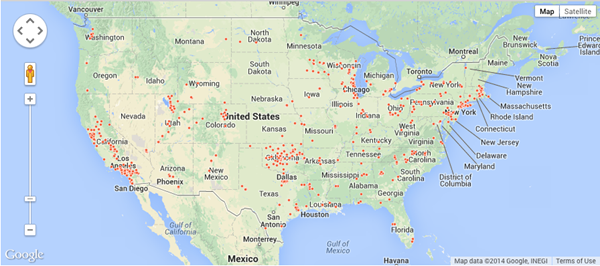 |
Western U.S. CNG Locations
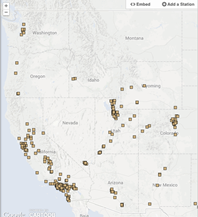 |
Central U.S. CNG Locations
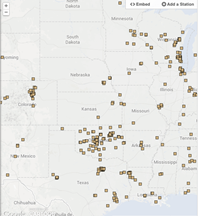 |
Eastern U.S. CNG Locations
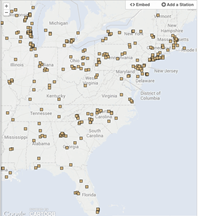 |
It seems that infrastructure for CNG is mainly situated around major cities currently, but expansion is happening at a rapid pace. With domestic reserves of natural gas plentiful and price relatively stable due to it being a domestic fuel, it makes sense to consider the use of this alternative fuel if you have the means to do so. I have now used this abundance of information to create my own “book” of the top fueling locations in my area, according to price and truck accessibility, which I plan to use as a tool in my attack on inflated alternative fuel costs! With the help of this self-made “book” and a little resourcefulness, I hope to achieve the goals I’ve set for myself in lowering my “Cents Per Mile (CPM)” fuel cost and in doing so, reduce my “Total Cost of Ownership (TCO)”.